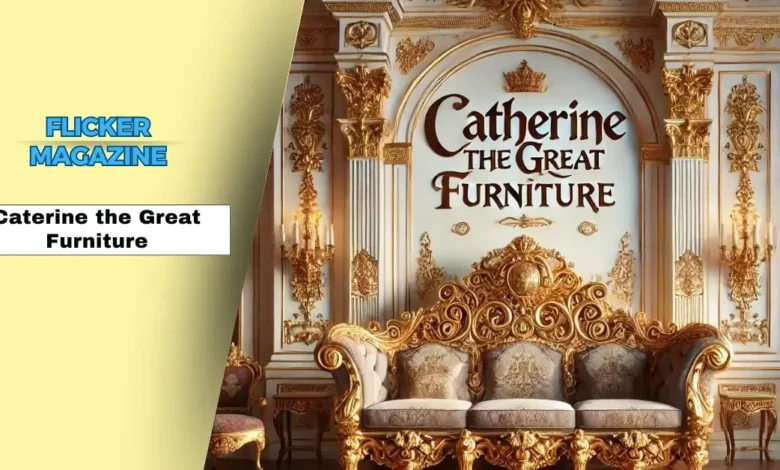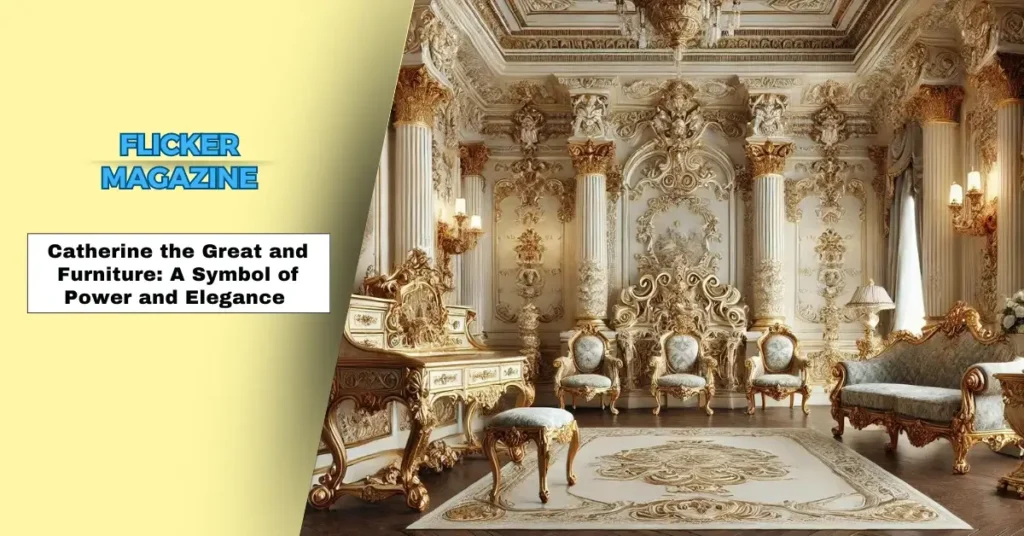The History of Russian Empress Catherine the Great Furniture: Elegance, Power, and Controversy

Catherine the Great furniture style had a lasting influence on Russian design. During her reign from 1762 to 1796, she favored a neoclassical style with clean lines and classical themes, which is still admired today. Catherine was also a supporter of Enlightenment ideas and protected famous thinkers like Voltaire and Diderot. Her influence on furniture and culture continues to inspire.
Key Points:
- Catherine the Great’s furniture had a lasting influence on Russian design.
- Her style blended European and Russian elements, especially neoclassical themes.
- Many pieces were lost during WWII, but some are preserved in museums.
- Rumors of suggestive furniture remain unproven and likely exaggerated.
- Catherine’s furniture continues to symbolize her power and cultural legacy.
What Happened to Catherine the Great Furniture?
The empress of Russia Catherine the Great, liked furnishings that blended European styles with Russian elements. She admired Rococo’s ornate designs and Neoclassical symmetry, but she encouraged craftsmen to create a distinctive fusion that incorporated motifs from Russian history.
As a result, her collection embodied the sophistication and power of the Russian Imperial Court. In addition, her pieces offer insight into 18th-century craftsmanship and architectural trends.
Many pieces of Catherine the Great furniture have been preserved and are displayed in museums, particularly in the palaces where she lived, such as the Winter Palace in St. Petersburg.
However, some of her furniture was lost or damaged over the years due to wars, particularly during World War II when the Wehrmacht looted Russian palaces. Some pieces were recovered, while others remain missing or destroyed. Her furniture is admired for its elegance and intricate European designs, often reflecting her taste for French style.

What is Catherine the Great Famous For?
In her lifetime, Catherine was a political figure with significant achievements. Her rule expanded Russia’s territorial boundaries and she worked to reform the legal system.
She was a formidable ruler who helped shape Russia into a modern, enlightened, and powerful empire. Her reforms, cultural advancements, and passion for the arts left a lasting mark on the nation. She was also a patron of the Enlightenment, frequently corresponding with intellectuals and supporting the ideals that this philosophical movement promoted.
But she was also a patron of the arts and literature. She believed that success in these fields would give Russia a reputation for civilization. She founded libraries, academies, and elementary schools across her empire.
She also maintained a voluminous correspondence with the Enlightenment philosophers Voltaire and Diderot. She was a generous patron who often bought their entire library collections. And she stunned Europe by spending vast sums on masterpieces of art.
Furniture from her reign was not only luxurious but it also embodied the Russian culture she championed. The styles, craftsmanship, and influence of her furniture are still seen today. It is considered a symbol of the Russian imperial court. She was also known for her romantic liaisons, but she was deft at parting with them pleasantly so no one felt slighted.
Did Catherine the Great’s Husband Love Her?
Catherine the Great ascended to the Russian throne in 1762 following a coup that deposed her husband, Peter III.
Which shows they did not seem to have a loving relationship. Their marriage was strained from the beginning, with reports of emotional distance and incompatibility. Peter was more interested in his own pursuits, and both he and Catherine had affairs during their marriage
Her notorious love life even influenced her son Paul, who she often hinted was the child of one of her lovers. When she died in 1796, he ascended the throne as Emperor Paul I.
How Did Catherine the Great Get Rid of Her Husband
As she climbed the ranks of Russian politics, Catherine developed a network of loyalists and made it her business to butter up people in positions of power — the leaders of army units, aristocrats, anyone who could one day be useful. She even exchanged flattering letters with the British ambassador, cementing her place as an Anglophile queen with an enduring passion for Enlightenment ideals.
As time went by, she started to suspect that her husband was unfit for ruling and set her sights on dethroning him. She threw herself into the project with gusto, and “she used her formidable political skill to put together a military coup,” writes Isabel de Madariaga in her book.
The coup, dubbed the “Old Guard Uprising,” ultimately succeeded in dethroning Peter III and bringing Catherine to power. But she did not stop there. As she began to plan her next moves, she started a new romantic relationship with Grigory Orlov, an officer who had been instrumental in the coup that brought her to power.
Read Also:
Who Took Over After Catherine the Great Died
After Catherine the Great died in 1796, her son, Paul I, took over the throne as Emperor of Russia. Catherine had intended to bypass him in favor of her grandson, Alexander, but Paul became emperor immediately after her death. His reign was marked by a reversal of many of Catherine’s policies and reforms, and he ruled until his assassination in 1801, when his son, Alexander I, became emperor.

Catherine the Great and Furniture: A Symbol of Power and Elegance
Catherine the Great had a vision of Russia becoming a modern, enlightened empire that rivaled European powers. Her furniture collection exemplified her vision through opulence and grandeur. Her furniture featured intricate rococo flourishes and clean lines of neoclassical design. Motifs of classical antiquity adorned pieces, showing Catherine’s admiration of Greco-Roman culture and her engagement with Enlightenment ideals.
Catherine invited skilled craftsmen from France and Italy to work in Russia. These foreign artisans introduced new techniques, enhancing Russian furniture with cultural flair and sophistication. Marquetry and inlay reached a level of complexity unparalleled before, bringing unprecedented elegance to Russian palaces.
Catherine the Great’s furniture remains a powerful symbol of her influence in Russian culture today. These historic pieces are exhibited in museums and palaces, highlighting their beauty to visitors from across the world. These masterpieces stand as proof that art transcends time and place, leaving an indelible mark on design and culture.
Read Also: Argentina National Football Team vs Ecuador National Football Team Timeline
The Rumored X-Rated Furniture
The rumored X-rated furniture of Catherine the Great refers to myths and stories suggesting she owned furniture with suggestive or intimate carvings and designs. These tales claim that some of her private furniture pieces were adorned with provocative imagery, reflecting her supposed personal interests. However, there is no solid historical evidence to support these claims, and many historians believe these rumors were likely invented long after her death to damage her reputation.
The Role of the Wehrmacht in 1941: The Fate of Her Palace and Furniture
In 1941, during World War II, the Wehrmacht (the German army) invaded the Soviet Union, leading to significant destruction in many parts of Russia, including historical sites. Catherine the Great’s palaces, such as the Winter Palace and the Catherine Palace, were looted and damaged during the occupation. Many valuable pieces of furniture, artwork, and artifacts were either stolen or destroyed. Some of the lost items have never been recovered, while others were eventually found and restored. The invasion caused irreparable damage to Catherine’s legacy, particularly in terms of her grand estates and furnishings.
Conclusion: Catherine the Great Furniture
Catherine the Great furniture represents her lasting influence on Russian design and culture. Her elegant and opulent style, blending European and Russian elements, is still admired today. Though some pieces were lost during wars, many are preserved in museums and palaces, showcasing her vision of sophistication and power. Catherine’s furniture continues to be a symbol of her legacy and the grandeur of the Russian imperial court.
FAQs: Catherine the Great Furniture
Did Catherine the Great’s furniture survive WWII?
Some of Catherine’s furniture was lost or damaged during World War II, but many pieces were preserved and are now displayed in museums.
Was Catherine’s furniture truly X-rated?
There are rumors about Catherine owning suggestive furniture, but there is no solid evidence to support these claims.
Where can I see Catherine the Great’s furniture today?
Catherine the Great’s furniture is displayed in museums and palaces, such as the Winter Palace in St. Petersburg.
What style of furniture did Catherine the Great prefer?
She favored a neoclassical style with clean lines, classical themes, and elements of French and Russian design.
What happened to Catherine the Great’s furniture during WWII?
Some of her furniture was looted or destroyed during the German invasion, but some pieces were recovered and restored.



